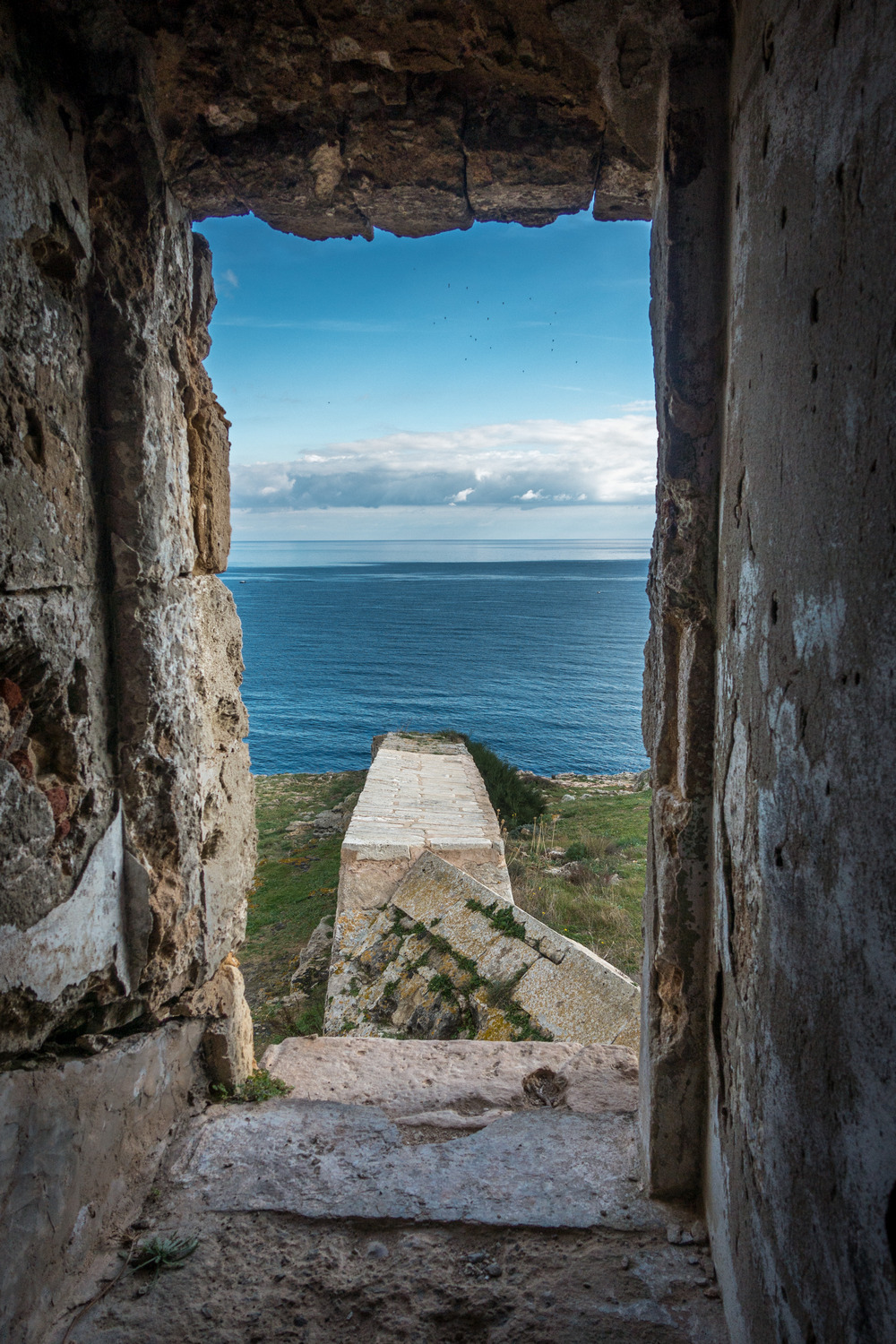A strategic location in the Mediterranean made Menorca an important geopolitical site. The powers of the time, threatened by rival forces and Algerian pirates, erected defensive constructions along the island’s coast during the 18th and early 19th centuries. These towers belong to Menorca’s heritage. Some of the most important are part of the Camí de Cavalls route as prominent landmarks.
The 185 kilometers of Camí de Cavalls 360º are rich in attractions. The route has very varied points of interest, both from a landscape point of view and from a natural perspective, as well as a sport or historical approaches. In this sense, along the route, you can see a series of defensive towers. They are the architecturally most notable landmarks, apart from the lighthouses.
The defensive towers of Menorca were built between the end of the 18th century and the beginning of the 19th century. A historical period marked by the fights for the island between the Spanish and British forces. In fact, both powers raised some of them when it was their turn to dominate the island.
Torre de Sa Mesquida

This tower was built by the British in 1799, on a point that stands out in the middle of Cala Mesquida, to the north of the residential and summer resort. It is therefore in the first kilometers of the Camí de Cavalls if you start from Maó, before even leaving the asphalt for the first time, a few meters further.
Its position, on a rocky formation, makes it well visible from the beach and from the path. It stands out for the large dimensions of its machicolation. In addition, it preserves the spiral staircase attached to the wall, although it cannot be seen because the entire enclosure is privately owned.
Torre de Rambla
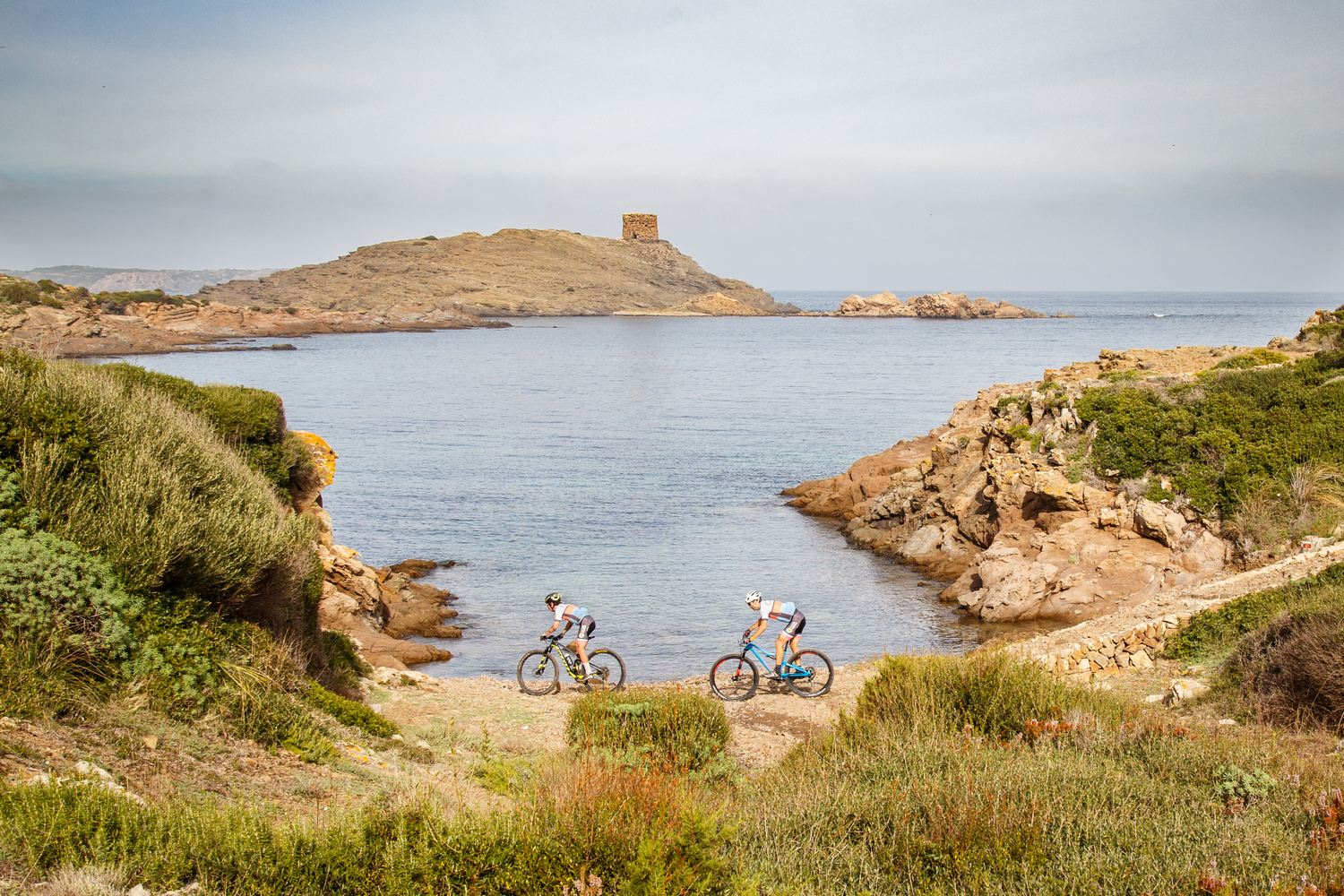
Of British origin and built in 1802, the Torre de Rambla is located in the territory of the Parc Natural de S’Albufera des Grau, at the point that closes Cala des Tamarells to the north and facing the Illa d’en Colom. This is the second section of the Camí de Cavalls, a few hundred meters north of the town of Es Grau.
It is in quite bad condition and cannot be visited. Whoever approaches its surroundings will be able to discover the remains of a nearby building where the dragons were housed. They were a unit of cavalry soldiers in charge of warning if there was poor visibility and of patrolling the blind spots from the tower.
Torre de Sanitja
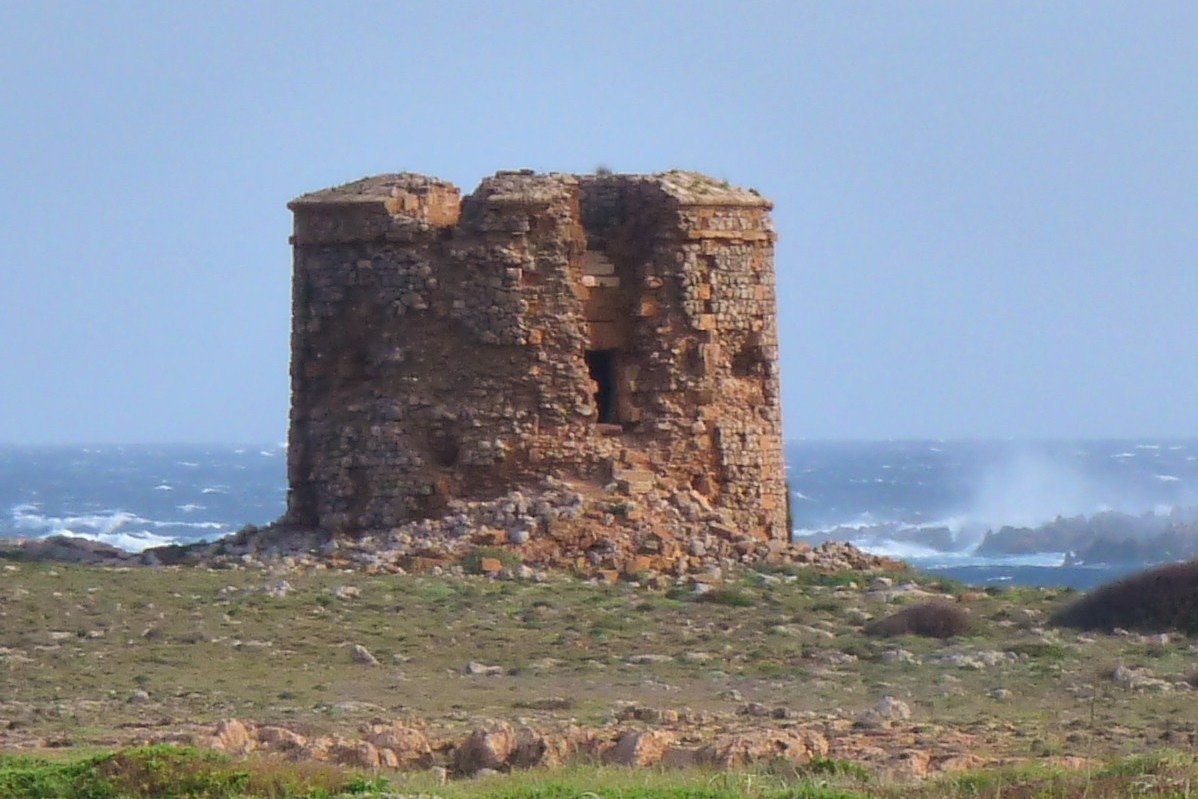
Construction of this English tower began in 1800 at the entrance of Port de Sanitja, one of the most important harbors on the island in Roman times. It is not visible from the Camí de Cavalls, but you only have to deviate a few meters when connecting with the Far de Cavalleria road to be able to contemplate it.
The mission of this building consisted of guarding this section of the north of Menorca, one of the few natural refuges sheltered from the north wind and, therefore, a possible entry point for enemy attacks. It is a small tower, which has been recently restored.
Torre des Castellar

Built by the English in 1799, this tower is located guarding the entrance to the elongated Cala de Santandria. The Camí de Cavalls passes in front of it, shortly after leaving Ciutadella and just past the new port terminal.
Torre des Castellar has been restored and shows several details that make it unique. The most notable of them is that it was built sunk in the ground and is surrounded by a six-meter-wide moat from which it barely protrudes. In fact, the ground floor is five feet below the level of the pit.
Torre de Son Ganxo
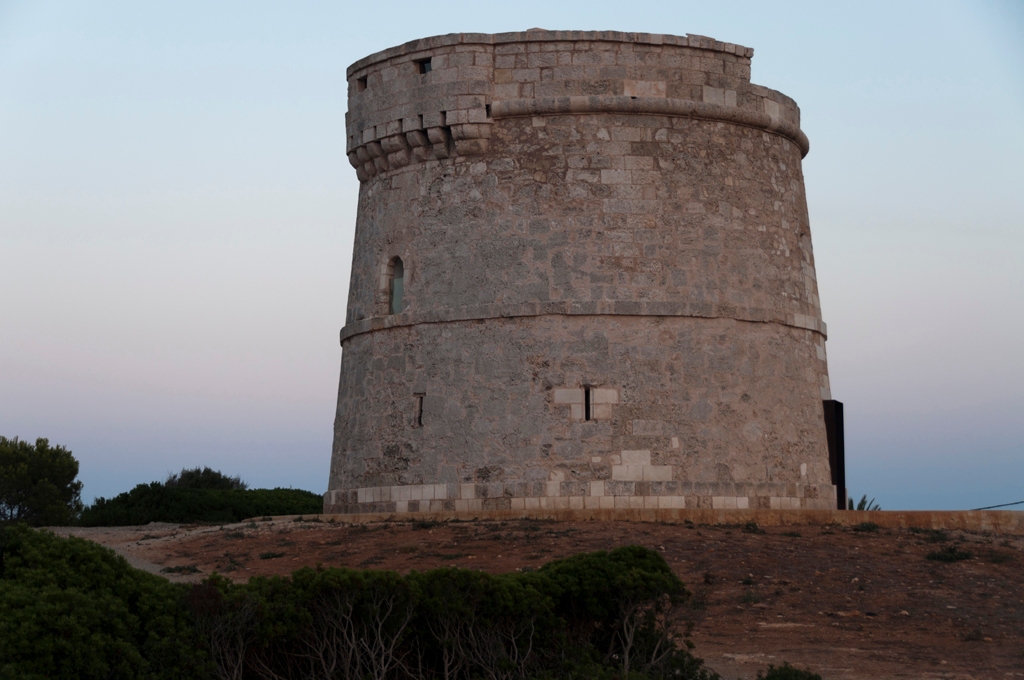
The Spanish built this tower in the southernmost tip of Menorca in 1787. It is located in the residential area of Punta Prima, facing the Illa de l’Aire. The Camí de Cavalls passes right in front of it, at the end of section 18.
Torre de Son Ganxo was restored about ten years ago and is used as a youth camp house.
Torre d’Alcalfar

Not far from Torre de Son Ganxo and also of Spanish construction from 1787, this tower is located on the tip that borders Cala d’Alcalfar to the south. Thus, it is facing the east of Menorca, very close to the route of the Camí de Cavalls as it passes through section 19.
This southeastern section of the island was the target of raids by Algerian pirates during the 18th century and hence several defensive buildings were erected. Torre d’Alcalfar is built with the marés, the typical sandstone of Menorca.
Torre d’en Penjat
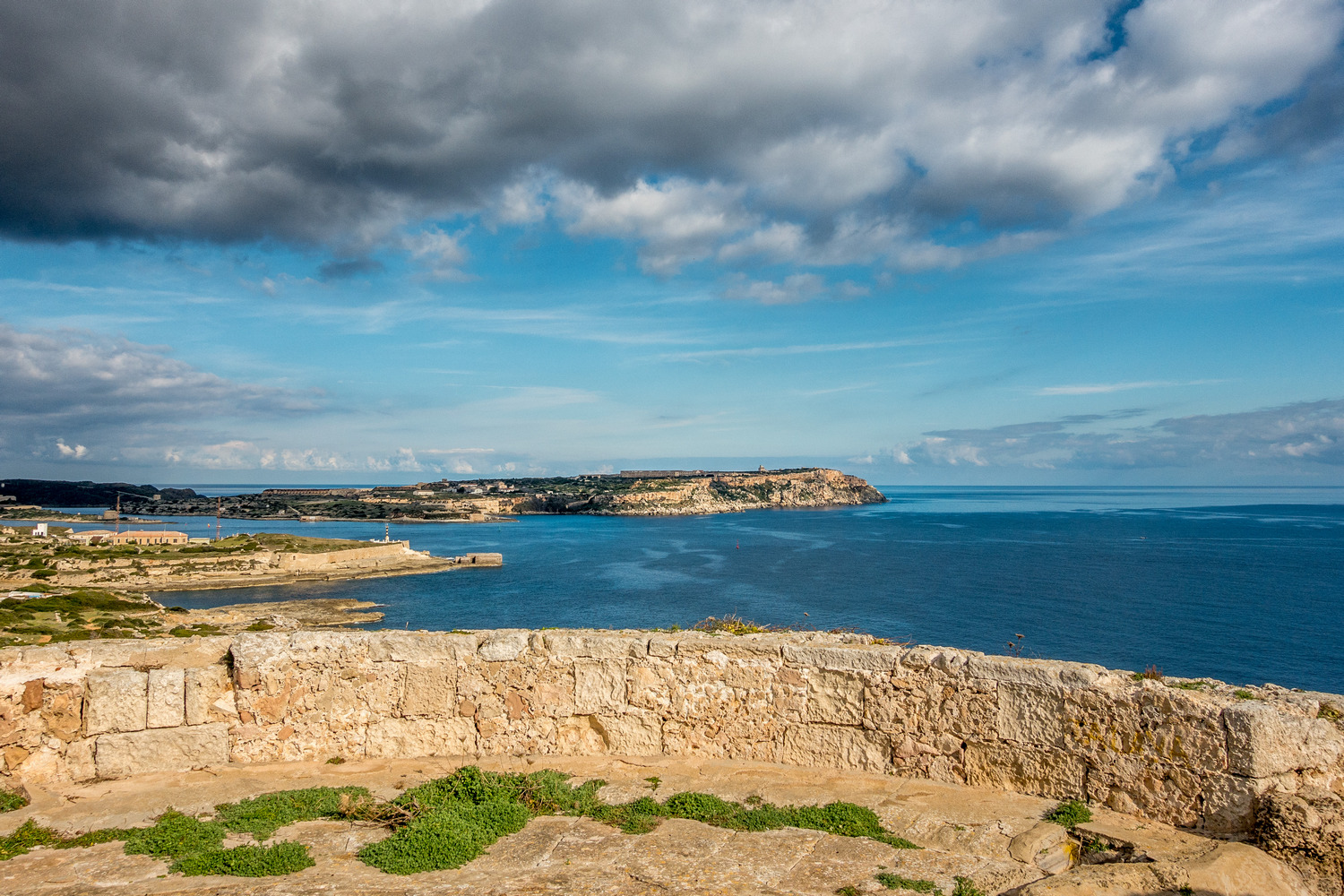
This was the first tower built by the British in Menorca, in 1798. It was promoted by General Stuart and it is also often known by this name. Its current name refers to the Puig d’en Penjat hill on which it was built. It is located very close to the Fort of Marlborough, with which it was connected by a wall, and was part of the defensive network of the port of Maó.
Its structure faithfully responds to the architecture of the Martello towers, which the British used frequently against Napoleonic troops. It was surrounded by a moat. In 1946 it underwent a series of military modifications that were reversed in the 1989 restoration.
